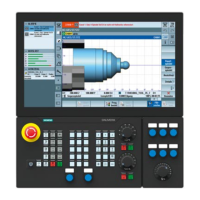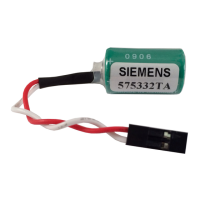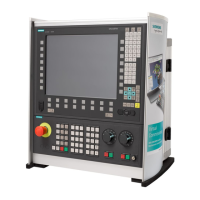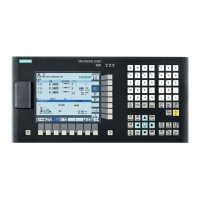OCTOBER 2005 GENERAL INFORMATION 85
SIEMENS
MAINTENANCE MANUAL
5.3 NON-UNIFORM
EXPANSION
5.3.1 MATERIAL DIF-
FERENCES
The differing rates of expansion by unlike materials further complicate the problems
created by the heat generated in the machining process. This applies both to parts
stock, like aluminum, and to fixtures and sub plates, often also made of a material like
aluminum. Aluminum's coefficient of expansion is nearly twice that of steel or cast iron
(the primary VMC materials), which means the aluminum will expand nearly twice as
much as the ball screws, head, spindle, or table.
5.3.2 FIXTURES / SUB
PLATES
Fixtures or sub plates of material other than the steel/cast iron of the VMC will cause
the greatest problems in this area, unless the bottom of the fixture or sub plate is flat
within .001° (please note that "parallel" is not the same as "flat", and flatness is the key
in this area). For example, a sub plate made of aluminum has an expansion coefficient
nearly double that of the table to which it is secured. If the flatness is not within. 001",
the heat of the machining process causing the sub plate to expand at twice the rate of
the table will result in the sub plate actually bending the VMC's table. This will cause
binding which will both affect position accuracy and cause undue wear on the mating
surfaces under the table.
5.3.3 MACHINE
ASSEMBLIES
Various assemblies of the VMC itself will be affected by different sources of heat in the
machining process, and the effect of each assembly on positioning will vary
accordingly.
For instance, the head will expand from two heat sources, the spindle heat and the
ambient temperature. The effects of thermal expansion in the head will be seen in the
directions of the Y axis and the Z axis, but not in the X axis, with the Y axis expanding
away from the column (toward the operator) and the Z axis expanding down toward the
table. Meanwhile, the Y axis itself will be expanding away from the column due to the
expansion of the ball screw, which will compensate for the effect of the head's
expansion in the same direction.
The ball screws will expand due to the friction of the nut. The effect will
increase with the distance of the nut from the motor mounts (the effective length of the
screw), and will be in the direction away from the motor mounts. Thermal growth of the
ball screws is independent of growth in the head or the table.
The spindle experiences heat not only from the actual cutting, which is transferred
through the tool, but also from its bearings. The spindle also transfers most of this heat
to the head, and the thermal growth is reflected in the head position, as mentioned
above, and is independent of changes in the ball screws or table.
The table receives most of its heat secondhand, through the heat of the nut, the heat
from the part (through the fixture or sub plate), and the heat carried by hot chips that lay

